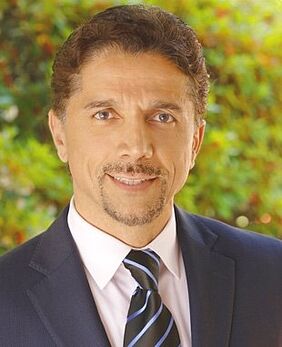Time Stretch and its Applications in Nonlinear Dynamics, Biomedicine, and Computational Imaging
Séminaire
Time Stretch and its Applications in Nonlinear Dynamics, Biomedicine, and Computational Imaging
Bahram Jalali
Department of Electrical and Computer Engineering, UCLA, Los Angeles, CA, USA
Measurements of non-repetitive and rare signals that occur on short timescales requires fast real-time measurements that exceed the speed, precision, and record length of digitizers. Time-stretch is an optical hardware accelerator that overcomes the speed limitations of photodetectors and electronic digitizers and enables ultrafast single-shot spectroscopy, imaging and other measurements at refresh rates reaching billions of frames per second with continuous recording spanning trillions of consecutive frames. The technology has opened a new frontier in measurement science and has led to discovery of several new scientific phenomena in nonlinear optics, laser dynamics and diagnostics of relativistic electron beams. It has also created a new class of instruments that have been integrated with artificial intelligence for sensing and biomedical diagnostics. We review the fundamental principles and applications of time stretch including a spin-off technology known as the phase stretch transform, a new computational imaging algorithm that is emerging as the best edge and texture feature extractor for digital images.
Biography
Bahram Jalali is the Director of the Photonics Laboratory, the Northrop-Grumman Endowed Chair and Professor of Electrical and Computer Engineering at UCLA with joint appointments in Biomedical Engineering, California NanoSystems Institute (CNSI) and Department of Surgery at the UCLA School of Medicine. He received his Ph.D. in Applied Physics from Columbia University in 1989 and was with the Physics Research Division of Bell Laboratories in Murray Hill, New Jersey until 1992 before joining UCLA. He is a Fellow of IEEE, the Optical Society of America (OSA), the American Physical Society (APS), American Institute for Medical and Biological Engineering (AIMBE), and SPIE. He is the recipient of the R.W. Wood Prize from OSA, Aaron Kressel Award from IEEE, and IET Achievement Medal, and the Pioneer in Technology Award from the Society of Brain Mapping & Therapeutics. He was the Founder and CEO of Cognet Microsystems, a company acquired by Intel in 2001. He was elected into the Scientific American Top 50 and MIT Technology Review Magazine Top 10 in 2005.

Partager sur X Partager sur Facebook